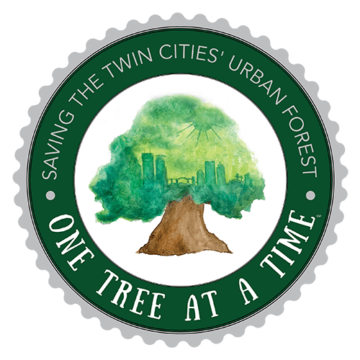Emerald Ash Borer (EAB) in Minnesota Report for 2022
What is the status of Emerald Ash Borer in Minnesota?
As of May 2022, EAB has been found in 40 counties across the state of Minnesota. Every county in the Twin Cities metropolitan area is experiencing active EAB infestation.
- EAB has been spreading across the metro area since 2009, but we are now reaching the peak impact when untreated trees are dying quickly. This is a crucial time for making a plan for your ash tree: have it protected this summer, or remove it before next spring.
- Tree crews that manage ash tree removals are extremely busy this summer. This includes city staff and private businesses.
- Ash trees that die must be removed quickly because they pose a safety risk.
- Stressors such as extreme heat, lack of rain, and environmental site conditions are killing trees of all species. Ash trees that have been treated are safe from EAB, but are still vulnerable to these health threats the same way all plant and tree species are. Proper tree care, including watering, is essential to keeping protected ash trees in top condition
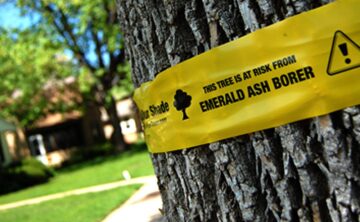
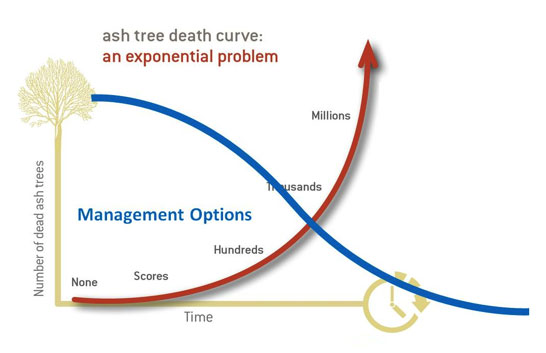
EAB Quick Facts: Summer 2022 Update
- We are entering the uphill side of the “death curve.” The number of ash trees declining and the speed at which they are dying is accelerating.
- Every community in the Minneapolis/St. Paul metro area is being impacted by EAB.
- Healthy ash trees should be treated this summer if their owners want to save them.
- Homeowners who do not want to treat their ash trees should plan to have them removed before next spring.
The results of different management strategies have become clear
Why treat ash trees now—isn’t it too late?
It’s not too late to protect healthy ash trees from EAB!
You can do your part to save our urban forest, protecting one tree at a time. Contact us to schedule a no-cost consultation with one of our experts!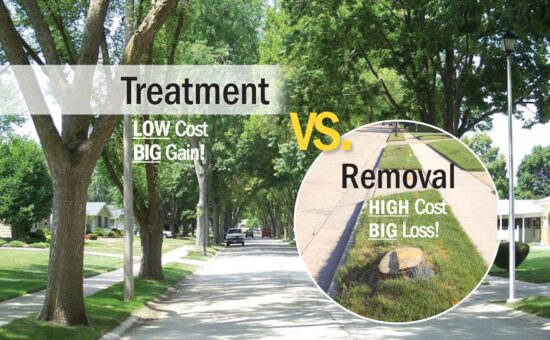
Commonly asked questions about EAB
If my ash tree needs to be removed, when should it be done?
- If the tree is dead or poses a safety risk, have it removed as soon as possible. Otherwise, there are advantages to having it done in winter. It’s easier to contain the pest because adults aren’t flying and it’s easier on your landscape to have work done when it’s frozen. Finally, if the tree is still in relatively good condition you can enjoy one final summer’s worth of shade.
How do I pick the best replacement tree if my ash is removed?
- Many factors determine the best tree choice, including the variety of trees in your neighborhood, and conditions in your yard. A certified arborist can examine your site and discuss your tree preferences to help you make the best choice. To get started, read our experts’ advice here!
What time of year do the borer insects spread to new trees?
- Depending on spring weather, adult emerald ash borers usually begin to emerge in early summer. Adults generally fly from tree to tree seeking new food sources and places to lay eggs from May to September.
How does EAB spread?
- Adult borers infest new ash trees and lay eggs under the tree’s bark. Once the larvae hatch, they feed on the layer of tissue beneath the bark, damaging the system used to transport water and nutrients and eventually killing the tree.
Rainbow Treecare can help you decide what’s right for your ash tree
Learn more about how Rainbow Treecare is committed to helping homeowners save our urban forest One Tree at a Time! As the number of trees impacted by Emerald Ash Borer in Minnesota continues to grow in 2021, knowing what is best for your ash tree can be a difficult decision to navigate. Rainbow Treecare can help. It’s our mission to protect as many ash trees from EAB as possible and to let our urban forest thrive. If you have questions about the 2021 effects of Emerald Ash Borer in Minnesota or are interested in our ash tree removal services, get in touch with us today.
Other items you may be interested in:
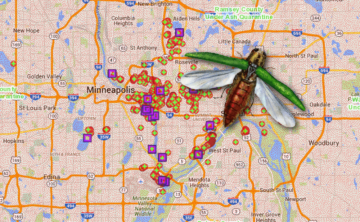
City Partnerships
Minnesota Partnerships & Discounted Emerald Ash Borer Treatments As of January 2023, Rainbow Treecare has partnered with over 35 cities throughout the Twin Cities to
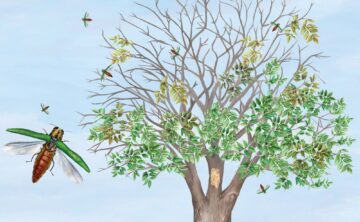
Emerald Ash Borer
Save Your Tree: Treatment for Emerald Ash Borer If you live in the Minneapolis & St. Paul metro, there is a good chance you have
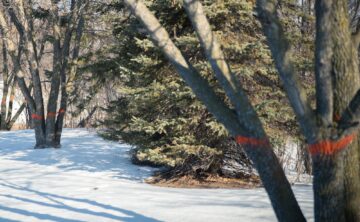
My City Tagged My Tree, Now What?
As Emerald Ash Borer (EAB) continues to impact trees across Minnesota and the Twin Cities metro area, some residents are returning home from work to

